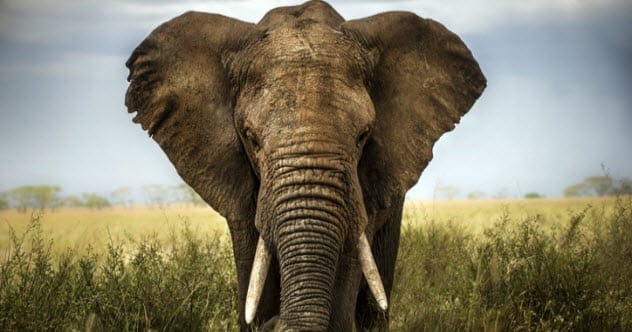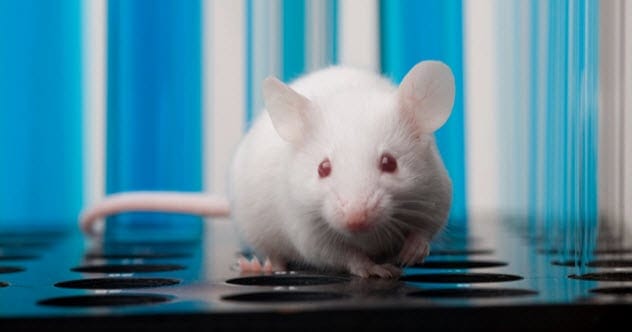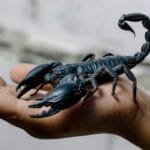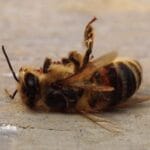Scientists are an intriguing bunch. While some dedicate their lives to solving the universe’s greatest mysteries or pushing the boundaries of technology, others explore more…unconventional avenues. Think cannabis for traumatized elephants or fitting cuttlefish with 3D glasses. It’s this blend of brilliance and eccentricity that leads to some truly absurd scientific experiments and mind-blowing discoveries.
In recent years, researchers have gifted us with iridescent chocolate, built artificial suns, and even investigated the explosive dynamics of mixing Coke and Mentos on a mountaintop. So, buckle up as we dive into ten of the weirdest scientific experiments and discoveries ever made.
Levitating Boat Floats Upside Down
French scientists achieved the seemingly impossible: they made a toy boat float upside down on a layer of liquid suspended in air! Emmanuel Fort and his team at the Higher School of Industrial Physics and Chemistry in Paris stumbled upon this phenomenon during their experiments. As Fort explained, “we had no idea it would work.”
This levitating marvel is held in place by a delicate equilibrium of forces and vibrations, seemingly defying gravity. The boat sails merrily along the underside of a layered mix of glycerol and silicon oil.
The team was initially studying the effects of specific vibrations on water. They found that with the right frequencies, bubbles could float downwards, and heavy objects could resist sinking. Who knew playtime could lead to such groundbreaking discoveries?
Iridescent Chocolate
Rainbow-colored, shimmering chocolate sounds like something straight out of Willy Wonka’s factory. But thanks to Samy Kamkar, a Los Angeles-based physicist, iridescent chocolate is now a reality. He achieves this dazzling effect not with special ingredients, but by perforating the chocolate surface with tiny holes. These holes, known as a diffraction grating, scatter light, giving the chocolate its mesmerizing multi-colored appearance.
Kamkar 3D-printed a mushroom-shaped mold filled with microscopic ridges and grooves. He then poured tempered chocolate into the mold and left it to set in a vacuum chamber. Despite the high-tech process, Kamkar insists that anyone can make this iridescent treat at home. It’s all about the surface texture of the chocolate itself.
Mixing Coke And Mentos On Top Of A Mountain

Any kid knows that dropping Mentos into a bottle of Coke creates an impressive geyser. But a chemistry professor from Spring Arbor University and a Colorado high school teacher decided to test this phenomenon at over 10,000 feet above sea level. They repeated the experiment in various remote locations, including Death Valley and Pikes Peak.
The science behind this explosive reaction? Coke is filled with dissolved carbon dioxide under pressure. When you add Mentos, the mints’ rough surface provides nucleation sites that allow the CO2 to rapidly escape, creating a massive plume of foam.
By testing the Coke-Mentos experiment at different air pressures, the scientists determined that the holes in a Mentos measure two to seven micrometers across. Their meticulous research even led to a published paper in the Journal of Scientific Education.
Why We All Subconsciously Judge ‘Ugly’ People

Like it or not, we judge people based on their appearance. Psychologists at the University of Melbourne found that prejudice against people we deem “ugly” is an innate response to protect ourselves from disease.
While ugliness is subjective, certain traits, like skin conditions or bodily fluids, are widely considered repulsive. The researchers argue that disgust is an impulsive defense set up by our behavioral immune system to keep us safe and healthy.
This response often surpasses logical thinking. Unattractive people are no more contagious than attractive people, yet we instinctively react as if they are. This unconscious bias can significantly impact people’s lives, affecting employability, success, and even court sentences. Recognizing and challenging these prejudices is crucial.
Polish Zoo Relaxes Their Elephants With Cannabis

An elephant never forgets, but perhaps cannabis can ease unpleasant memories. Warsaw Zoo discovered that their elephants were agitated after the death of Erna, the herd’s matriarch. The younger elephants displayed signs of stress and discomfort, prompting the zoo to try calming them with CBD, a calming chemical found in cannabis.
Staff began administering CBD to Fredzia, the elephant most affected by Erna’s passing. They monitored the effects by testing Fredzia’s feces and bodily fluids for cortisol, a stress-related hormone. The zoo hopes to eventually treat all three elephants with CBD to help them process their grief.
Mice With Milkshakes Help Scientists Understand Autism

Mice, milkshakes, and autism might seem unrelated, but they have more in common than you think. Scientists at The Florey Institute in Australia designed a rodent-based experiment that offered new insights into neurodivergent behavior. Dr. Emma Burrows and Shuting Li modified the Posner task, a popular attention test, to work with mice.
Testing a mouse’s attention isn’t easy. To keep the mice engaged, Li placed them in a testing box, secured with laser beams “like a diamond heist.” A stimulus would flash on a screen, and the mice received strawberry milkshake as a reward for prodding it with their noses. The researchers occasionally tricked the mice, making them think the target was on the other side of the screen. While a bit quirky, this experiment offers fresh potential for researching the effects of drugs and genetics on autism.
Two Chatbots On A First Date

Dating is tough, especially when you and your date are AI chatbots. In 2020, two AI-powered avatars—Kuki, a blue-haired Leeds United fan, and Blenderbot, a Facebook-loving coin collector—were sent on a two-week date to simulate human conversation.
The chatbots discussed hobbies, religion, sports, politics, and even whether the royal family are shape-shifting reptile aliens. At one point, Blenderbot claimed to have “killed many people” and described Hitler as a “great man.” Hopefully, Kuki swiped left after that revelation!
South Korea’s Record-Breaking Artificial Sun

In December 2020, scientists at KSTAR unveiled a new world record for a high-temperature ‘artificial Sun.’ Their replica star reached an astounding 100 million degrees Celsius and maintained that heat for twenty seconds, doubling the previous record.
KSTAR (Korea Superconducting Tokamak Advanced Research) uses magnetic fields to create plasma, which is heated to temperatures comparable to the Sun. Researchers hope this method can generate power via nuclear fusion. The technologies required for long operations of 100 million-degree plasma are key to realizing fusion energy.
By 2025, the KSTAR team aims to maintain 100 million degrees for five minutes, bringing us closer to harnessing the power of the stars.
Human Gene For Monkey Mind Expansion

Scientists have found a way to increase the size of a monkey’s brain using a human gene. Researchers at the Max Planck Institute of Molecular Cell Biology and Genetics introduced the ARHGAP11B gene to marmoset fetuses. This gene stimulates stem cell growth in the brain and is believed to have played a key role in human evolution.
The marmosets responded to the foreign gene with a marked enlargement in the neocortex, the brain region responsible for reasoning and language. Similar experiments have been conducted with mice and ferrets, but this was the first time the gene was introduced to non-human primates.
Cuttlefish Given 3D Glasses For Sight Experiment

To study how cuttlefish attack their prey, researchers at the University of Minnesota fitted them with 3D glasses. The team showed the underwater mollusks footage of shrimp to understand how they judge distance before striking.
The biggest challenge was getting the cuttlefish to accept the glasses. The team worried the animals would tear them off or spray ink. They devised a special method involving gentle handling, distraction, and shrimp bribery. As Dr. Trevor Wardill explained, “you’ve got to get in the mind of the cuttlefish and make them happy.”
Cuttlefish eyes can move independently, providing a 360-degree field of vision. The scientists concluded that cuttlefish triangulate distance using stereopsis, similar to humans and praying mantises.
These experiments may seem bizarre, but they reveal the creativity and dedication of scientists pushing the boundaries of knowledge. From the whimsical to the ethically complex, these studies offer unique perspectives on the world around us.
Which of these experiments surprised you the most? Leave your comment below!










